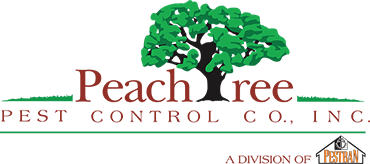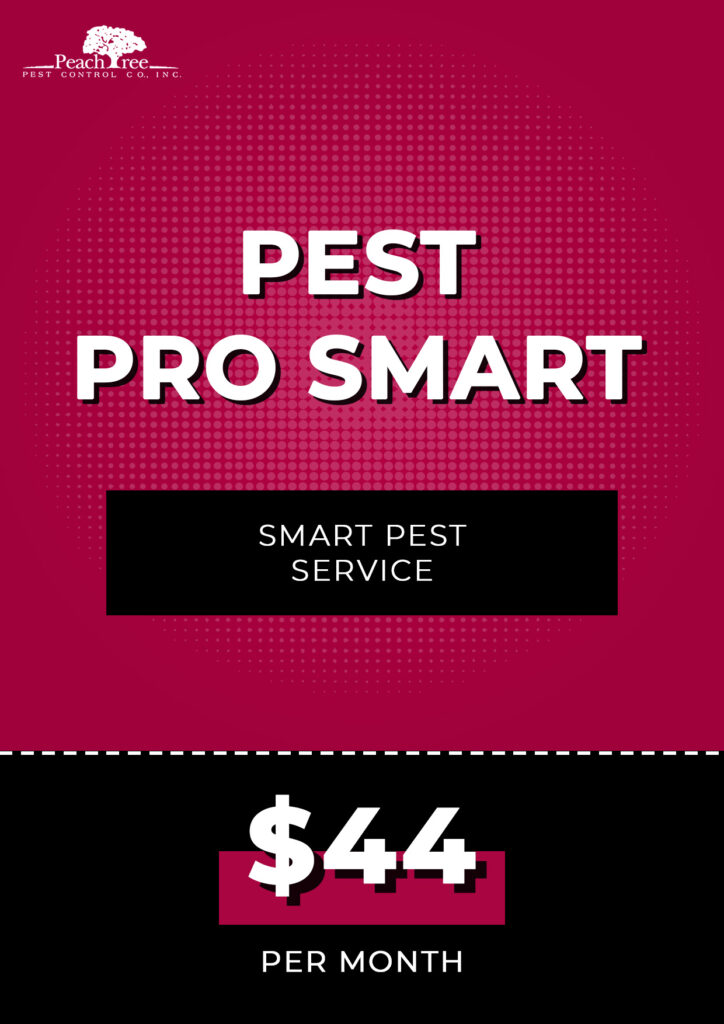Yellow Jackets: How to Identify and Get Rid of Them
What Are Yellow Jackets?
The yellow jacket is a bee-sized stinging insect that feeds mainly on proteins and sweets. It’s a type of social wasp that usually nests underground in large colonies consisting of the queen, drones, and workers. They also build nests in tree stumps, hollow logs, under eaves, inside walls, and in attics. Yellow jackets are active in the spring and summer and normally die off in the winter. Each nest starts with a single queen but quickly grows in size to up to 4,000 workers living in a nest the size of a basketball or larger.
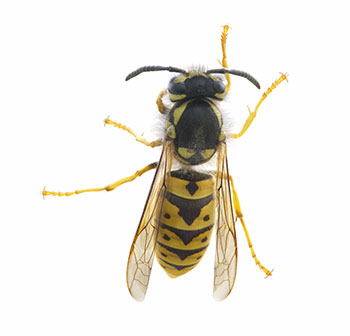
Yellow Jackets are bold and aggressive when pursuing threats and during the fall when the colony begins to die out. Yellow jackets spend the winter months hiding in tree stumps, logs, or tree bark until the fertilized queen emerges to build a paper-like nest for her eggs.
How Can I Identify a Yellow Jacket?
These insects have bright yellow and black heads, with yellow and black bands on the abdomen. You can distinguish the yellow jacket from other stinging insects by its vibrant color, hairless hind legs, and narrow, defined waist. Yellow jackets have six legs, large antennae, and range in size from 3/8 to 5/8 of an inch long.
The nest of the yellow jacket is made up of a paper mache-like material constructed from finely chewed wood fiber, with a small entrance around the size of a nickel. They are often hard to spot, mainly due to the preferred location in hidden or out-of-the-way spots. If you frequently see yellow jackets around your home or business, a yellow jacket nest is likely nearby, as these insects only forage for food a mile or less away from their colonies.
How Do I Get Yellow Jackets?
Yellow jackets are usually attracted by the presence of food. The smell of meat grilling outside, sweets left out at picnics, and open trash cans are all risks of drawing these pests into your yard. They primarily enjoy sugars, carbs, and proteins, so take care to keep food inside and clean all food residue off outside surfaces.
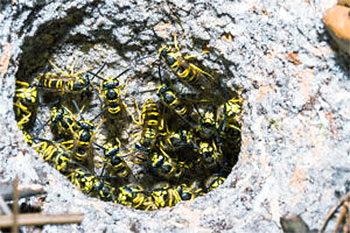
What Are the Effects of Yellow Jackets on a Home or Business?
Yellow jackets don’t typically cause structural damage to a building, but they sometimes construct their nests inside an opening in a building’s interior. Attics and walls are some of their favorite spots. If this happens, the stinging pests will defend their nest and themselves if disturbed. They can even chew through drywall to enter further into the home. You must not seal the entrance to the nest until all the yellow jackets are dead. Otherwise, the pests will attempt to escape through the inside of the building, causing a stinging hazard.
Yellow Jacket Stings and Reactions
The sting of a yellow jacket is painful. While they aren’t normally quick to sting, a yellow jacket can get aggressive when defending its colony. This insect has small barbs on its stinger, allowing it to deliver multiple stings.
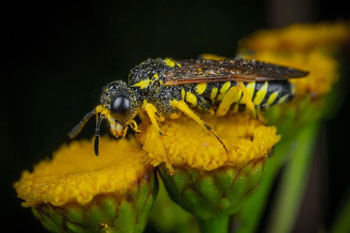
Some individuals can have an allergic reaction to a sting. A localized reaction is the most common, with symptoms such as redness, swelling, pain, and itching. Most symptoms subside after a few hours, but more severe reactions can take as long as a week to clear up and may be accompanied by nausea and fatigue. A more serious, systemic allergic reaction is rarer and requires immediate medical attention. Symptoms include red, swollen bumps, flushed skin, and difficulty breathing. Multiple stings may trigger a toxic reaction to the venom. Symptoms of this type of reaction include headache, fainting, convulsions, fever, nausea, vomiting, or diarrhea.
It’s also possible to develop a bacterial infection if you fail to clean the sting site and repeatedly scratch the area. In rare cases, a delayed reaction occurs up to several weeks following the sting. If you get stung, you should seek medical attention to treat a sting and get the advice of a healthcare professional to avoid complications.
How Do I Prevent Getting Yellow Jackets?
You can take some preventative measures to help lower the risk of getting yellow jackets on your property. One of the most helpful suggestions is to clean up any food that may attract yellow jackets looking to feed. Clear away trash and keep it sealed in clean trash cans. Pick up fruit that falls from fruit trees.
Taking action to keep pests away from your property, like luring Yellow Jackets away from entry points with traps, is a smart strategy; however, if you notice the frequent presence of yellow jackets, it’s best to contact an expert in yellow jacket control to eliminate the problem. Yellow jackets can be aggressive and dangerous; DIY yellow jacket extermination is not recommended.

Protecting Your Home or Business From Yellow Jackets With Peachtree Pest Control
Peachtree Pest Control offers expert treatment designed to effectively and efficiently control and prevent pests from invading your home or business in Atlanta, Augusta, Fayetteville, Woodstock, Suwanee, Marietta, Hiram, and Aiken SC. Our use of Integrated Pest Management (IPM) techniques focuses on finding the core of the pest concern and controlling Yellow Jackets from the source. Through IPM, pest control materials are selected and applied in a manner that minimizes risks to human health, pets, and the environment.
Call Peachtree Pest Control today for your FREE and NO OBLIGATION estimate at 855-732-2487 or Schedule Online today!
